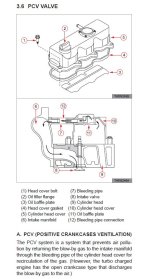Kioti Dave
Gold Member
It has been pretty cold here lately in Western Canada. Today, engine blew out crankcase dipstick due to high pressure. I am assuming that a vent hose is frozen. Anyone else see this happen to them?
All of these odd issues with people in the cold North make me glad to live in Texas! It was 72 degrees Fahrenheit here today. Had to turn on the AC because the house was getting warmish and muggy. Can't open the doors due to it being Mountain Cedar season. If you live in South Texas, you know what that means...
But to answer your original question, no, I haven't had that happen. Shouldn't the PCV or other valve take care of excess pressure? Do these things even have one? Hmm...
Had to rub it in hey! ������ it's was minus 42 here the other day. ( same in farenheit or celcius) after I let the tractor sit for a few minutes it was fine. Did it once last winter as well. The hose from valve cover seemed fine. Something is frozen.
Had to rub it in hey! ������ it's was minus 42 here the other day. ( same in farenheit or celcius) after I let the tractor sit for a few minutes it was fine. Did it once last winter as well. The hose from valve cover seemed fine. Something is frozen.
My older (DK45) has "positive" crankcase venting, but it simply consists of a (very short) hose that runs from the valve cover to the intake manifold. Because there is no throttle (air) valve, there is no need to have a PCV valve to restrict manifold vacuum loss at low power settings.
I cannot visualize how a PCV valve could work in a diesel, or why there would be any need for one. I do agree if you have (any measurable) crankcase pressure, it can be very detrimental to your crankshaft seals. My crankcase vent hose runs from the rear of the valve cover, to the rear of the intake manifold, maybe 1 foot long.
